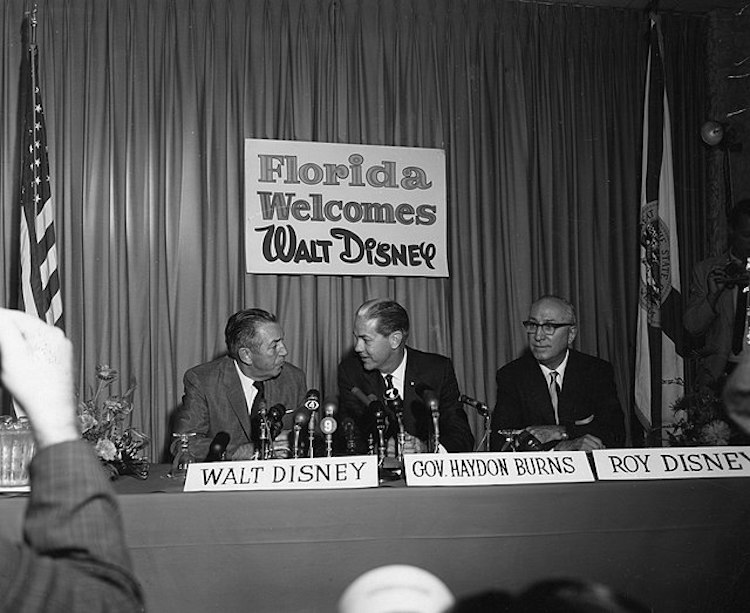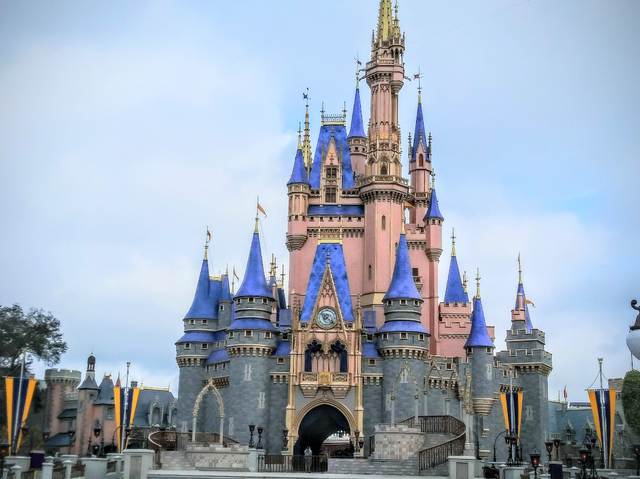Did You Know That Disney Used To Invent Fake Companies To Buy Land In Florida?
How did an unemployed cartoonist, a world war, and some covert land purchases kickstart a multi-billion-dollar dynasty? What if it all started with… a mouse?
Walt Disney hailed from a poor family and found himself out of work several times early in his career. But Walt had big dreams, a willingness to learn from mistakes, and a steadfast enthusiasm for avoiding stagnation. He also depended on his older brother Roy to handle business and financial affairs, allowing him to concentrate on creative endeavors.
In 1923, Walt and Roy founded the Disney Brothers Cartoon Studio, later known as the Walt Disney Studio. The studio is the birthplace of Mickey Mouse, who made his commercial debut in the first cartoon film with a fully synchronized soundtrack, Steamboat Willie.

A Dream Is A Wish Your Heart Makes
Expanding on their growing cartoon business, Disney revealed in 1934 that he would produce the studio’s first feature-length film. Nicknamed “Disney’s Folly” due to production troubles, Snow White and the Seven Dwarfs (1937) flipped the script with its critical acclaim and unexpectedly high box office gross, raising the bar for the rest of the film industry.
But success wasn’t always in the cards for the Disney brothers in these early days. World War II caused the loss of the lucrative European market, and some of their 1940s box office failures brought even further financial hardship. These include cartoon films that would later be regarded as iconic, such as Fantasia (1940) and Bambi (1942).
Deeply in debt by the beginning of the 1950s, the Disney brothers returned to their roots to produce a full-length animated film that they hoped would mirror the success of Snow White.
Walt had tinkered around through the years with the idea of revisiting the Cinderella story, previously produced by Disney as a cartoon. Cinderella was released in the theaters in 1950 and became an instant classic as well as the greatest box office triumph for the studio since Snow White.
The Happiest Place On Earth
Not one to rest on his laurels, Walt used the financial success of Cinderella to move forward. His envisioned dream was an amusement park that both adults and children could enjoy equally.
Disneyland opened in July 1955, replacing 160 acres of California orange groves. Although it cost $17 million to build, Disneyland quickly became an unprecedented financial success. This triumph led Walt, ever the discontented entrepreneur, to explore opening another theme park on the east side of the country.
The Start Of The “Florida Project”
Walt wanted to build a more community-type atmosphere than the one surrounding Disneyland. Discouraged by the suffocating number of motels near his California park, his dream for this new project centered around creating a self-contained futuristic utopia. He called this vision the “Experimental Prototype Community of Tomorrow,” or EPCOT for short.
But first, they’d have to find land – a lot of land – and to avoid falling back into their previous near-bankrupt state, they needed to acquire it all at very low prices. Walt scouted out some vast real estate in Florida, close to major roads that would provide good tourist access.
But how could this now-famous company buy all the various plots of land without the subsequent landowners catching on, exorbitantly driving up their asking prices?
Secret Identities And Shell Companies
Shell companies, secret identities, and clandestine methods worthy of international spycraft accomplished their goal. First, a secret team was assembled for “Project X,” including Disney lawyer Bob Foster, who hid his identity as “Bob Price.”
Disney also employed the services of lawyer and banker Paul Helliwell, a retired Army colonel who formerly worked for the wartime intelligence Office of Strategic Services (OSS), then the Central Intelligence Agency (CIA).
Shortly after, shell companies carrying legitimate-sounding real estate investment company names were formed. Walt must have had a good laugh when he created a few shell companies involving inside jokes and puns: Retlaw (“Walter” spelled backward), Ayefour (I-4, a Florida interstate), and M.T. Lott (get it?).
Main Street USA’s second-floor windows give clues to various aspects of Walt Disney World Magic Kingdom’s history. If you get a chance to visit, don’t miss the shell companies immortalized there as “subsidiaries.” Also, look nearby for a rather tongue-in-cheek pun: “A Friend in Deeds is a Friend Indeed.”

The Dream That You Wish Will Come True
Unfortunately, Walt didn’t get to see his Florida dreams come to fruition because he passed away in 1966. When Walt’s brother Roy abandoned retirement to complete the project, he dedicated the newly minted theme park to his brother as “Walt Disney World.”
Sadly, Roy also died a few months after the opening. But the team that took the reins was well-trained by the brothers, and they continued building on Walt Disney’s dreams.
Orlando’s 1960 population was just over 200,000 people; by 2019, the population grew to almost two million. Florida’s most popular attraction has brought abundant growth and jobs to an area originally comprised of mostly swamp land while maintaining a large chunk of the land for conservation purposes.

